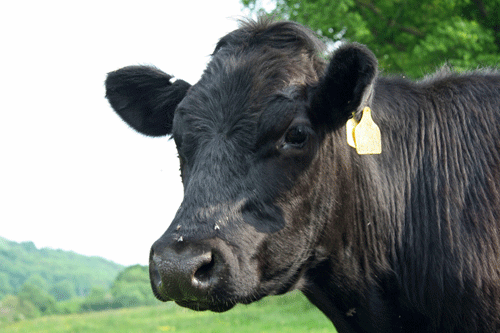Bovine TB infection depends on feedback between cattle and badgers

Bovine tuberculosis (BTB) is an infectious disease affecting cattle and badgers. New research from the Universities of Bristol and Cambridge has found that BTB is most likely to be nearly under control in both species taken in isolation, however together, control is likely to be considerably more challenging.
In the UK, a test-and-slaughter surveillance scheme forms the basis of BTB control, as well as badger vaccination and culling being trialled in select areas. Until now, studies have tended to focus on the disease in cattle or badgers, but not together. This work, published in the Proceedings of the Royal Society B, demonstrates that feedback between cattle and badgers is critical for understanding and controlling BTB.
Using mathematical modelling techniques combined with data from a range of sources including badger and cattle population data and BTB infection rates, researchers from Bristol's School of Social and Community Medicine and Cambridge's Department of Veterinary Medicine, were able to model the cycle of infection between cattle and badgers and predict the impact of BTB controls.
The findings showed that while infection in both cattle and badgers is most likely nearly under control on their own, targeting badger-to-badger transmission has only had a modest impact on cattle infection. More effective strategies are reducing badger-to-cattle and cattle-to-cattle transmission.
Dr Ellen Brooks-Pollock, the study's lead author and now lecturer in Infectious Disease Mathematical Modelling at the University of Bristol, said: "Bovine TB has had a serious impact on the cattle industry in the UK, as well as across Europe. Our findings show that in areas with badger infection, cattle-to-badger and badger-to-cattle transmission is critical to the whole system. You can't just consider one species in isolation. Reducing badger-to-cattle transmission is likely to be more effective than reducing prevalence in badgers alone. This may have particular implications for badger vaccination programmes, depending on local incidence of badger infection."
Professor James Wood, Head of the Department of Veterinary Medicine at Cambridge, added: "The dual host element of the disease has been ignored for far too long in the public debate about the disease. We hope that this paper provides a dynamic framework that can help take the debate and control of this disease to the next level."
More information: "Eliminating bovine tuberculosis in cattle and badgers: insight from a dynamic model." DOI: 10.1098/rspb.2015.0374
Journal information: Proceedings of the Royal Society B
Provided by University of Bristol
















